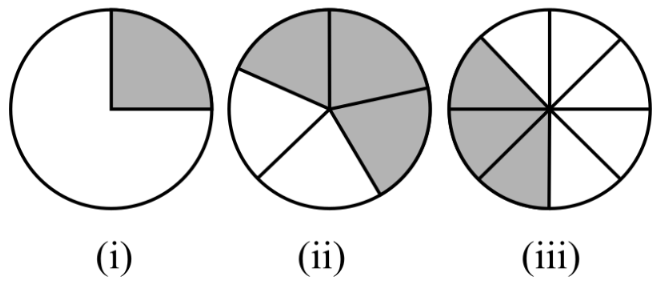NCERT Solutions For Class 7 Maths Chapter 8 Comparing Quantities in Hindi - 2025-26
FAQs on NCERT Solutions For Class 7 Maths Chapter 8 Comparing Quantities in Hindi - 2025-26
1. Where can I find reliable, step-by-step NCERT Solutions for Class 7 Maths Chapter 8 for the 2025-26 session?
You can find detailed and accurate NCERT Solutions for Class 7 Maths Chapter 8, 'Comparing Quantities', on Vedantu's website. These solutions are crafted by subject experts and strictly follow the CBSE 2025-26 syllabus. Each answer provides a step-by-step method to ensure you understand the logic behind solving the problem, not just the final answer.
2. What is the correct method to solve a profit or loss percentage problem as per the NCERT syllabus?
To solve a profit or loss percentage problem correctly, you should follow these steps:
First, identify the Cost Price (CP) and the Selling Price (SP) from the question.
Calculate the profit or loss. If SP > CP, then Profit = SP - CP. If CP > SP, then Loss = CP - SP.
Use the appropriate formula: Profit % = (Profit / CP) × 100 or Loss % = (Loss / CP) × 100.
The final result is your profit or loss percentage.
Always remember to use the Cost Price as the base for your calculation.
3. How many exercises are there in NCERT Class 7 Maths Chapter 8, and what do they cover?
Chapter 8, Comparing Quantities, in the Class 7 Maths NCERT textbook has three exercises. The NCERT solutions for these exercises cover the following topics:
Exercise 8.1: Focuses on finding ratios and determining equivalent ratios.
Exercise 8.2: Deals with converting fractions and decimals to percentages and vice-versa, and solving problems based on percentages.
Exercise 8.3: Covers application-based problems involving profit and loss percentage, and the calculation of Simple Interest.
4. What is the standard formula for calculating Simple Interest (S.I.) in Chapter 8?
The standard formula used to calculate Simple Interest in the NCERT solutions for Chapter 8 is:
S.I. = (P × R × T) / 100
Where:
P stands for the Principal amount (the initial sum of money).
R stands for the Rate of interest per annum (in percent).
T stands for the Time period (in years).
5. How are the concepts of 'ratios' and 'percentages' related in this chapter?
Ratios and percentages are fundamentally related ways of comparing quantities. A percentage is a special kind of ratio where the second quantity (the denominator or the whole) is always considered to be 100. For example, a ratio of 3:4 is equivalent to the fraction 3/4. To express this as a percentage, we find an equivalent fraction with a denominator of 100, which is 75/100 or 75%. This shows that percentages are simply ratios standardised to a common base of 100 for easier comparison.
6. Why is it crucial to use the Cost Price (CP) as the base for calculating profit or loss percentage, and not the Selling Price (SP)?
It is crucial to use the Cost Price (CP) as the base because profit or loss is always calculated based on the original investment. The CP represents this initial investment. Calculating the percentage based on the Selling Price (SP) would be misleading, as the SP already includes the profit or is reduced by the loss. Using the CP as the base gives a true and accurate measure of the gain or loss relative to what was originally spent.
7. What is a common mistake students make when solving questions from NCERT Chapter 8?
A very common mistake, especially in Exercise 8.3, is confusing the formulas for calculating the final Amount and the Simple Interest (S.I.). Students often provide the S.I. when the question asks for the total Amount, or vice-versa. Remember, Simple Interest is just the extra money earned or paid. The total Amount is the Principal + Simple Interest (A = P + S.I.). Always read the question carefully to determine which value you need to find.
8. How can I apply the concepts from Chapter 8, 'Comparing Quantities', in real-life situations?
The concepts from this chapter are extremely practical. Here are a few real-life applications:
Percentages: Calculating discounts during sales, understanding your exam scores, or figuring out the nutritional content on food labels.
Ratios: Mixing ingredients according to a recipe, comparing sports statistics, or scaling maps and drawings.
Profit and Loss: Understanding business transactions, selling old items, or assessing the value of an investment.
Simple Interest: Calculating interest on a savings account, a loan from a bank, or money borrowed from a friend.
9. How do the NCERT Solutions for Chapter 8 help in preparing for exams?
The NCERT Solutions for 'Comparing Quantities' are vital for exam preparation because they demonstrate the exact step-by-step methodology expected by CBSE evaluators. By following these solutions, you learn how to structure your answers correctly, ensuring you don't lose marks for incomplete steps. They also clarify fundamental concepts like why CP is used as a base for profit/loss percentage, which helps in tackling Higher Order Thinking Skills (HOTS) questions effectively.

























